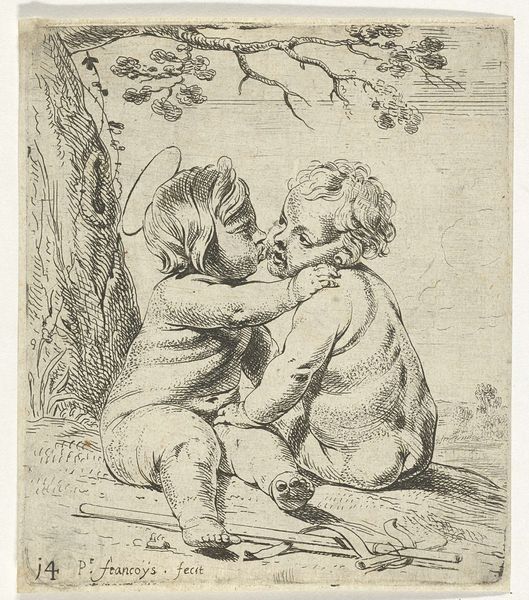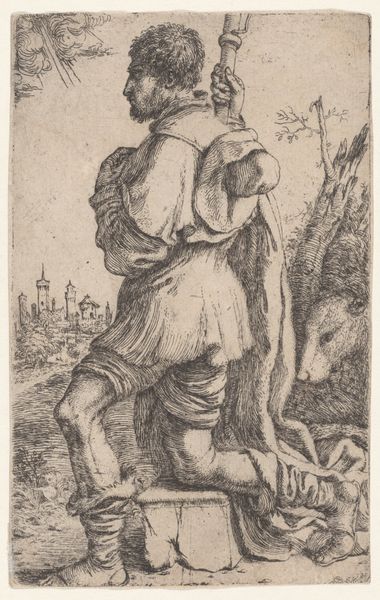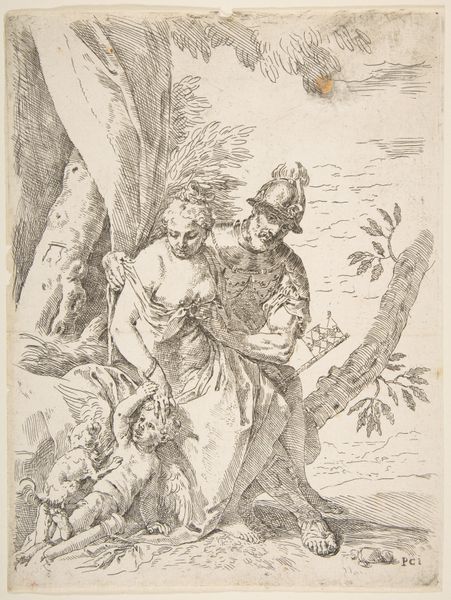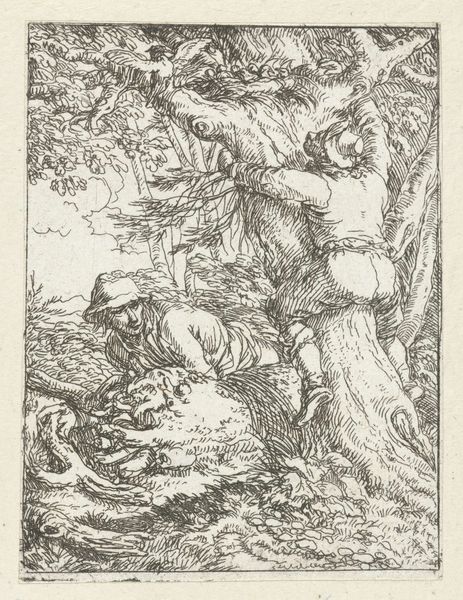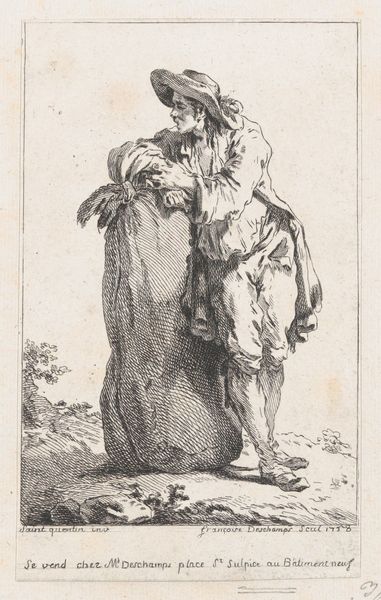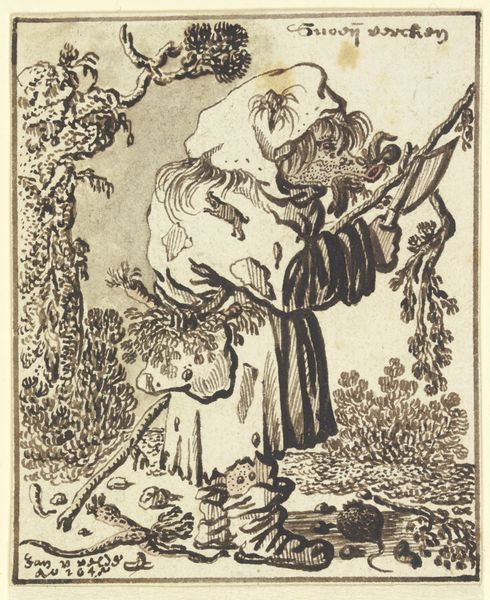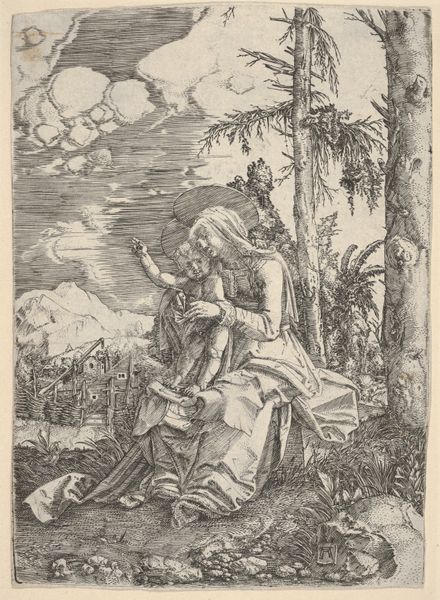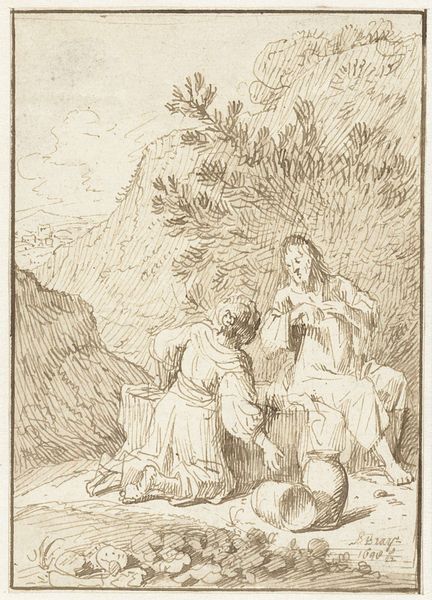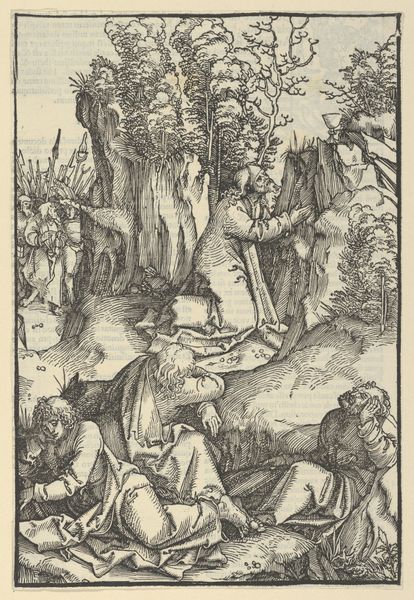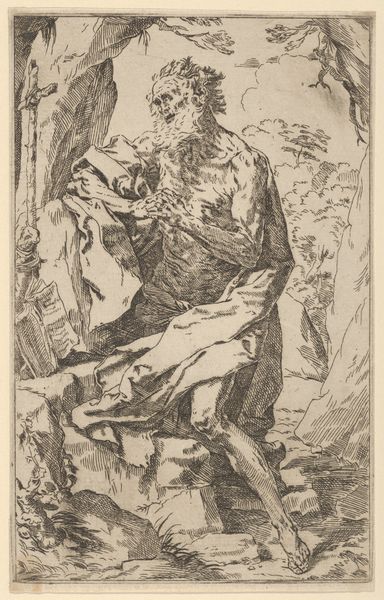
Dimensions: 190 mm (height) x 114 mm (width) (bladmaal)
Curator: Lorenz Frølich's pen and ink drawing, "Skjold's Fight with the Bear," created in 1852, depicts a scene of raw confrontation between man and beast, a visual spectacle rendered with meticulous detail. Editor: Whoa. You can almost feel the earthy grit of the forest and the beast's hot breath in your face. It feels so close, almost claustrophobic despite the depth in the scene. I'm struck by the chaotic energy radiating from the conflict. Curator: Indeed. Observe the composition. The artist masterfully utilizes line weight to establish depth and texture. Notice how the darker, heavier lines define the foreground figures – Skjold and the bear – pulling them forward. In contrast, the background figures are delineated with finer, lighter strokes, subtly receding into the pictorial space. Editor: It’s like a fever dream. But also… the guy facing the bear looks remarkably calm, almost bored by the whole affair. Is he trying to strangle the bear with his bare hands? Curator: The struggle encapsulates a timeless heroic narrative, likely rooted in Scandinavian folklore. The human figure is composed with confidence, contrasted with the aggressive animal in conflict. Furthermore, if one regards the broader cultural moment, such artwork fits within the stylistic movement of Romanticism. Editor: Right, this wrestlemania between nature and civilisation. But there's this edge of the absurd too. Like, why aren’t the other people jumping in? They just look mildly inconvenienced by the scuffle. And what's up with those skinny little dog-weasel-things? Curator: Such interpretation might consider intersubjectivity to question normative artistic intentions. However, within a structured analysis, it remains paramount to view the artwork through its visual form. Editor: Of course. I'm just saying, Frølich is having fun with this scene. There's a twinkle of something playful amidst the brutality, isn't it? He doesn't seem to take the hero stuff entirely seriously, even as he makes something compelling from the contrast of man and bear. Curator: An appropriate reading considering the context of art history may be achieved via critical investigation into narrative structure and employment of negative space. Editor: Absolutely, and thanks to Frølich's linework, we don't need colour to imagine the smell of damp earth, the sounds of panting animals, and the fear that would likely accompany such a showdown. It really makes you feel present, which is kinda wild for a drawing. Curator: And I am drawn to his formal economy; it delivers narrative impact without needing painterly embellishments. It invites closer aesthetic observation and contextual analysis within an epoch fascinated by sagas and primal nature.
Comments
No comments
Be the first to comment and join the conversation on the ultimate creative platform.
